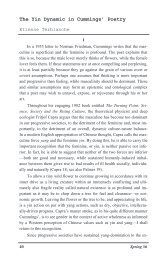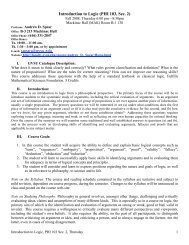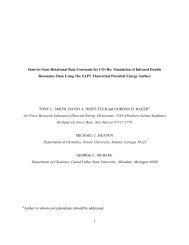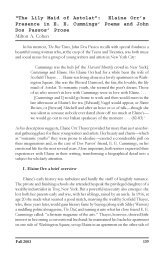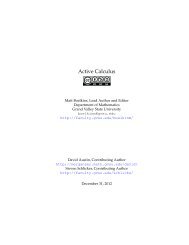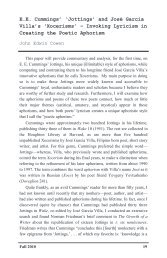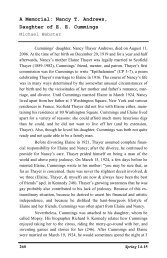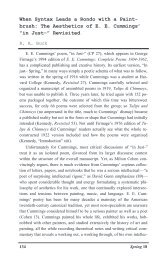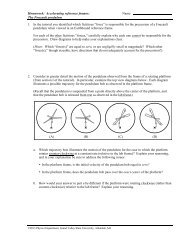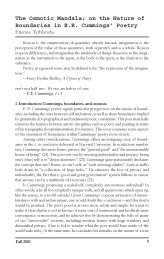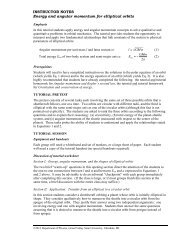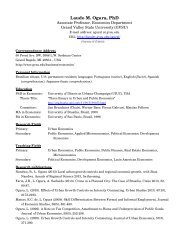Active Calculus - Gvsu - Grand Valley State University
Active Calculus - Gvsu - Grand Valley State University
Active Calculus - Gvsu - Grand Valley State University
- No tags were found...
You also want an ePaper? Increase the reach of your titles
YUMPU automatically turns print PDFs into web optimized ePapers that Google loves.
104 4.4. THE FUNDAMENTAL THEOREM OF CALCULUS4.4 The Fundamental Theorem of <strong>Calculus</strong>Preview Activity 4.4. A student with a third floor dormitory window 32 feet off the ground tossesa water balloon straight up in the air with an initial velocity of 16 feet per second. It turns out thatthe instantaneous velocity of the water balloon is given by the velocity function v(t) = −32t + 16,where v is measured in feet per second and t is measured in seconds.(a) Let s(t) represent the height of the water balloon above the ground at time t, and note thats is an antiderivative of v. That is, v is the derivative of s: s ′ (t) = v(t). Find a formula fors(t) that satisfies the initial condition that the balloon is tossed from 32 feet above ground.In other words, make your formula for s satisfy s(0) = 32.(b) At what time does the water balloon reach its maximum height? At what time does thewater balloon land?(c) Compute the three differences s( 1 2 ) − s(0), s(2) − s( 1 2), and s(2) − s(0). What do thesedifferences represent?(d) What is the total vertical distance traveled by the water balloon from the time it is tosseduntil the time it lands?(e) Sketch a graph of the velocity function y = v(t) on the time interval [0, 2]. What is the totalnet signed area bounded by y = v(t) and the t-axis on [0, 2]? Answer this question in twoways: first by using your work above, and then by using a familiar geometric formula tocompute areas of certain relevant regions.⊲⊳




